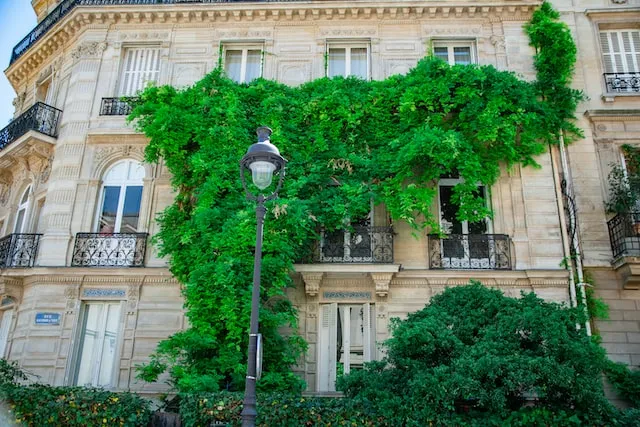A green facade or green wall is a simple and innovative way of making buildings more sustainable.
While a lot of people think that sustainability for real estate requires complex designs or technologies, even plants on a wall can provide a number of benefits and make an impact. This is why increasingly more architects and developers around the world implement green facades on their buildings.
To discover how you can benefit from a green facade at your property, it is important to find out how they work, what types exist, and what the pros and cons are.
What is a Green Facade?
A green facade is a wall that is entirely covered with suitable plants and greenery. It is also referred to as green wall and can come in different variations. These include direct, indirect, modular and continuous facades. Benefits from these solutions are better air quality, cooling, aesthetic design, increased rents, and a higher property value.
How Does a Green Facade Work?
A green facade (or green wall, living wall) can be seen as a vertical garden. It uses plants that can climb up the wall with or without support from the bottom to the top. Another way to create a green facade is by using plants that will be set into containers at certain heights, evenly distributed throughout the surface.
They can be installed outside, but often also inside where they can help to provide a pleasant climate with cool, humid air.
There are endless possibilities of plants that can be used for the purpose of a green facade. It mostly depends on the specific goals you want to achieve when installing one of these walls. This can be shading, aesthetics, temperature or humidity, but more likely a combination of all four.
Another aspect to keep in mind when choosing the right plants for your green facade is, that they will have different growing conditions such as lighting, temperature or soil.

Types of Green Facades
There are different types of green facades, depending on where they are mounted and what type of plant is used. It often depends on the building itself, which of the solutions is the most suitable. Generally, factors like costs, maintenance and underlying structure should be kept in mind.
Indirect Green Facade
An indirect green facade means that the plants are not directly attached to the wall of the building. Typically, a mesh or cables are placed at a distance to the wall on which the plants can climb and grow higher.
Direct Green Facade
Another type of green facade is directly attached to the building. There is no gap between the plants and the wall, and they are going to grow without much guidance. A disadvantage of this type can be the uncontrolled spread of the greenery, as well as the effect on the brickwork.
Modular Green Facade
For a modular green facade, plants are grown in separate modules that are placed throughout the entire wall. This makes it easier to substitute certain parts in case of problems with the plant’s growth. Furthermore, maintenance is also less costly due to the easier access to the facade behind the greenery.
Continuous Green Facade
On the other hand, a continuous green facade or green wall is useful for different types of plants. It is also much lighter than a modular system but requires other water supply solutions. Due to the continuous soil for the greenery, continuous green facades can look more covered.
Green Facade Pros and Cons
Installing a green facade can be a great solution to improve the sustainable performance of a building and have an impact on the local environment. Before this can be done, it is still very important to consider the disadvantages that might come with these solutions.
Advantages of a Green Facade
As already mentioned, there are a number of advantages that come with a green facade. These include the following benefits.
- Improved Temperature and Climate
Green facades can reduce the temperature inside a building and also outside in the near area. This will help to improve ventilation and air conditioning systems and thus reduce energy costs. - Better Air Quality
Thanks to the functions plants naturally have, they will absorb CO2 and lots of particles in the air. With the process of photosynthesis, they will return Oxygen and as a result refresh and clean the air in buildings. Additionally, the plants will also release water through their leaves and thus increase humidity for an overall better climate. - Improved Architectural Design
Lastly, green facades can make buildings look better and more aesthetic. Many green buildings won design awards for their impressive architecture. - Increased Rent and Asset Value
Thanks to all these advantages, which are very appealing for many tenants, it can increase the willingness to pay and as a result overall rent and property value.
Disadvantages of a Green Facade
Before going ahead and contacting suppliers of green walls it is necessary to also consider the downsides of this solution.
- Damage
Depending on the plants that are used, a green facade can potentially damage the building. There are some types of greenery that grow very fast and spread over the entire wall which makes it hard to maintain and remove. Additionally, the water that is used for the plants can enter the brickwork and lead to mould. All of this might decrease the longevity of the facade. - Maintenance
There is a significant amount of maintenance needed to keep a green facade in shape. This does not only relate to the watering of plants but also trimming and replacement. Therefore, regular maintenance expenses will occur when installing a green facade and it needs to be compared against the benefits. - Costs
The costs of installing one of these solutions can become high, especially for very large walls and specific types of plants. We will take a closer look at the expenses in the next part of this article.
How Much Does a Green Facade Cost?
The costs of installing a green facade can vary a lot, depending on the building structure, the environment and the plants themselves.
You should estimate the installation costs to be somewhere between 15€ – 200€ per ft² or 150€ to 2000€ per m². The running costs are very low in comparison as it is just basic plant care and watering.
Conclusion
A green facade can be a great solution to improve the sustainable performance of a building, especially when planning to get a LEED or BREEAM certification. There are different variants that all come with their own advantages and disadvantages. Overall, the benefits of a green facade are better air quality, climate, cooling, aesthetics, and potentially higher rents.
If you want to learn more about the future of commercial real estate, including topics such as sustainability & ESG, PropTech, architecture, development and investment, feel free to take a look at our other articles on Smart CRE. Here you will also find insights into the job market and how to start a career in real estate.
To stay up-to-date, we would be very happy if you subscribe to our monthly newsletter. Just enter your e-mail address below. Thank you!
